The Context of Impact: Vineet Rai’s Interview with Florian Kohler, ...
3 September, 2020
Group Assets Under Management
Underserved customers supported through our Group investments and engagements
Underserved women customers supported through our Group investments and engagements
Employees across the Group; 20% Women in management
The past two decades at Aavishkaar Group have been characterized by grit, innovation and learning. Our entrepreneurs, investors, team, and collaborators have shown an unparalleled passion towards building an inclusive and sustainable future. As we embark upon our third decade of impactful business, we’re excited to herald in a new future; one where impact is the new mainstream.
Our next decade of work includes expanding to several South East Asian and sub-Saharan African countries. Building upon the foundation of our past, we will work on scalable and synergistic business models, products and service across multiple sectors, full spectrum financial assistance, digital microfinance, phygital MSME finance, digital insurance, advisory and analytics, and impact investing with enhanced focus on environmental & social governance and management.

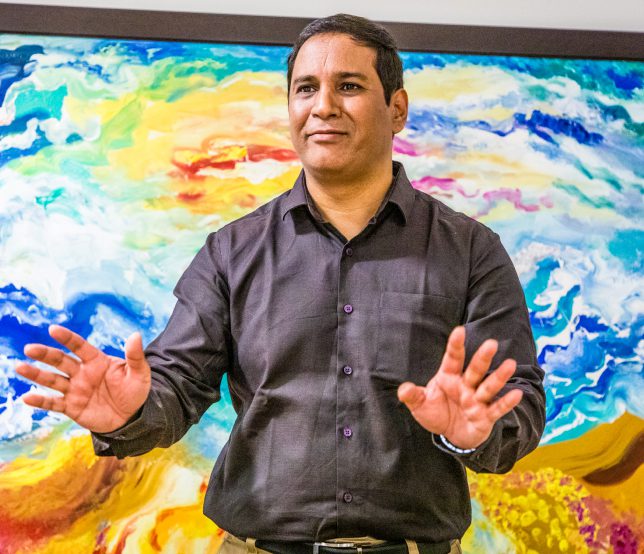

Microfinance clients served directly; 98% Women MFI clients
MSME clients served directly, 28% women-led MSMEs
Enterprises Disbursed Equity Capital directly; 29% Women-led Enterprises; 80% Enterprises received Institutional Capital for the First-time
Enterprises and MSMEs supported across sectors
CO2 emission reduced
People provided with essential services including healthcare, sanitation, and education
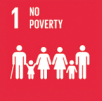
12.5 Mn People Provided with Microfinance (98% women) by Group companies and via Investments
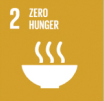
6.2 Mn farmers supported with livelihoods, products, and services (27% women) via engagements and investments
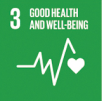
2.1 Mn People provided with affordable healthcare (56% women) via investments

3.15 Mn students provided with affordable, quality education (49% girls) via investments
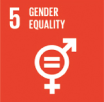
1,468 Women-led MSMEs supported directly with finance and capacity building services
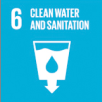
15 Mn people provided with sanitation facilities via Group companies and investments;
6.9 Mn people provided with potable drinking water via investments
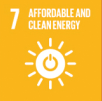
1.1 Mn people provided with clean cookstoves via Group investments
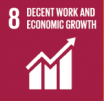
600k+ jobs and livelihoods created (300k+ women) via investments and clients

1534 Early-stage enterprises incubated and supported
52k+ MSME Provided with Financial Services, Products and Services
1.5 Mn MT of C02 Emissions Reduced
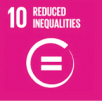
USD 2.1 Bn Disbursed in Microfinance, MSME Finance, and Equity Investments to enterprises and individuals in developing countries by the Group

20,000+ People Provided with Financial Services to Build Houses via Group investments

85K metric tons of waste recycled via engagements and investments
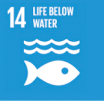
267 artisanal fishermen provided with fair-trade market access
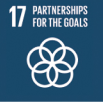
14 initiatives and national and global industry bodies founded and participated in
The basis of our Impact Measurement and Management system was developed using the ‘Theory of Change’ framework. Our vision is to bridge the opportunity gap for the Emerging 3 Billion. In order to realise this vision, we needed to create an entity that provided a combination of specialized knowledge and training, access to global networks, and productive capital in various forms. We developed a suite of financial services to support MSMEs and entrepreneurs that included facilitating debt and equity capital, and contributing to the development of ecosystems and sectors.
Through this work, we saw a burgeoning cohort of entrepreneurs working to provide microfinance, improvements in local supply-chains, improved circularity, and essential services including sanitation, healthcare, and education for the poor and vulnerable. We saw a rise in jobs and livelihoods in rural geographies, and exponential opportunities for collaboration, as well as a growing acceptance for “impact investing.” We are living proof that social challenges can be addressed through business-based solutions.
We strongly believe and promote ‘impact’ in the DNA of all our group businesses. Each of the Aavishkaar Group businesses - Aavishkaar Capital, Arohan, Ashv, and Intellecap - individually support various parts of the journeys of low and middle-income entrepreneurs, and together create a platform that leads to exponential impact across entire ecosystems. Each business, however, is rooted in strong common principles of access, inclusion, and sustainability.
The Aavishkaar Group's first Impact Investment Fund was conceptualized right at the turn of the 21st century. The creation of the Fund was based on our understanding that businesses can drive significant impact in the lives of the economically excluded. Creating a supportive ecosystem and investing in entrepreneurs willing to combine profit with purpose, would impact lives positively. This is our core impact thesis.
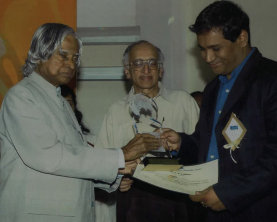
Our initial hypothesis emphasised on specific demographics for impact, such as farmers and artisans who were economically active yet unable to participate in the progress. We gravitated towards the idea of creating companies rather than investing in established ones, thereby becoming the first investor in almost all our companies. We focused on sectors like Agriculture, Dairy, Healthcare, Education, Rural Distribution, Artisanal work and Microfinance.
By 2010, it became evident to us that the idea of creating impact through investment was more complex than we’d imagined. Our approach, which by now was globally recognised as ‘Impact Investing’, pushed us to be an interim capital provider. So, we started looking at scale as a critical metric to attract other investors.
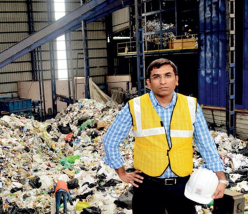

Our next phase of impact evolution was linked to our questioning of the attribution and ownership of impact. Is the impact owned by us or the entrepreneur? How do we make a distinction? Whose impact are we reporting? The decision to not interpret enterprise impact as our impact helped us to largely resolve the discussion about impact and its ownership. Here, we decided to look at ‘Our Impact’ from the perspective of the contribution by the fund investment team in identifying entrepreneurs, ideas, geographies, demographics and anything that was credit to the vision and hard work of the investment team.
This distinction has ever since been a critical and unique attribute of Aavishkaar’s Impact Reporting principle.
The evolution of India's demographic profile has seen a reduction in absolute poverty, and the emergence of a resource rich and highly aspirational middle class. Our impact lens has now evolved to take into account the ambitious investments that are looking at the demand of low and middle income segment population in domains like pre-school education, access to finance, better health and even safety nets like insurance, pensions etc.
Thus, after engaging in a robust sector wide debate at the India Impact Investor Council, we expanded the demographic definition in this phase of our impact to include 87% of India (Families earning more than 10 USD per day).
Microfinance clients served directly; 98% Women MFI clients
MSME clients served directly, 28% women-led MSMEs
Enterprises Disbursed Equity Capital directly; 29% Women-led Enterprises; 80% Enterprises received Institutional Capital for the First-time
Enterprises and MSMEs supported across sectors
CO2 emission reduced
People provided with essential services including healthcare, sanitation, and education

















The basis of our Impact Measurement and Management system was developed using the ‘Theory of Change’ framework. Our vision is to bridge the opportunity gap for the Emerging 3 Billion. In order to realise this vision, we needed to create an entity that provided a combination of specialized knowledge and training, access to global networks, and productive capital in various forms. We developed a suite of financial services to support MSMEs and entrepreneurs that included facilitating debt and equity capital, and contributing to the development of ecosystems and sectors.
Through this work, we saw a burgeoning cohort of entrepreneurs working to provide microfinance, improvements in local supply-chains, improved circularity, and essential services including sanitation, healthcare, and education for the poor and vulnerable. We saw a rise in jobs and livelihoods in rural geographies, and exponential opportunities for collaboration, as well as a growing acceptance for “impact investing.” We are living proof that social challenges can be addressed through business-based solutions.
We strongly believe and promote ‘impact’ in the DNA of all our group businesses. Each of the Aavishkaar Group businesses - Aavishkaar Capital, Arohan, Ashv, and Intellecap - individually support various parts of the journeys of low and middle-income entrepreneurs, and together create a platform that leads to exponential impact across entire ecosystems. Each business, however, is rooted in strong common principles of access, inclusion, and sustainability.

Our initial hypothesis emphasised on specific demographics for impact, such as farmers and artisans who were economically active yet unable to participate in the progress. We gravitated towards the idea of creating companies rather than investing in established ones, thereby becoming the first investor in almost all our companies. We focused on sectors like Agriculture, Dairy, Healthcare, Education, Rural Distribution, Artisanal work and Microfinance.

By 2010, it became evident to us that the idea of creating impact through investment was more complex than we’d imagined. Our approach, which by now was globally recognised as ‘Impact Investing’, pushed us to be an interim capital provider. So, we started looking at scale as a critical metric to attract other investors.

Our next phase of impact evolution was linked to our questioning of the attribution and ownership of impact. Is the impact owned by us or the entrepreneur? How do we make a distinction? Whose impact are we reporting? The decision to not interpret enterprise impact as our impact helped us to largely resolve the discussion about impact and its ownership. Here, we decided to look at ‘Our Impact’ from the perspective of the contribution by the fund investment team in identifying entrepreneurs, ideas, geographies, demographics and anything that was credit to the vision and hard work of the investment team.
This distinction has ever since been a critical and unique attribute of Aavishkaar’s Impact Reporting principle.
The evolution of India's demographic profile has seen a reduction in absolute poverty, and the emergence of a resource rich and highly aspirational middle class. Our impact lens has now evolved to take into account the ambitious investments that are looking at the demand of low and middle income segment population in domains like pre-school education, access to finance, better health and even safety nets like insurance, pensions etc.
Thus, after engaging in a robust sector wide debate at the India Impact Investor Council, we expanded the demographic definition in this phase of our impact to include 87% of India (Families earning more than 10 USD per day).

